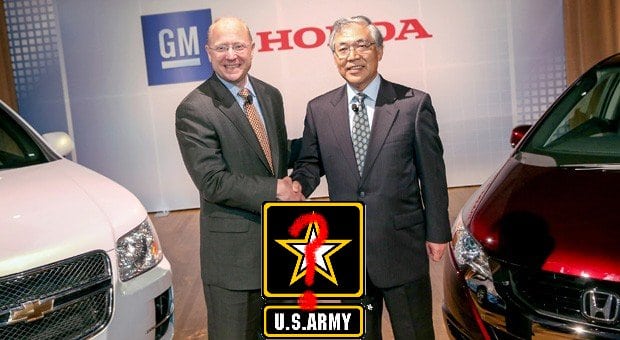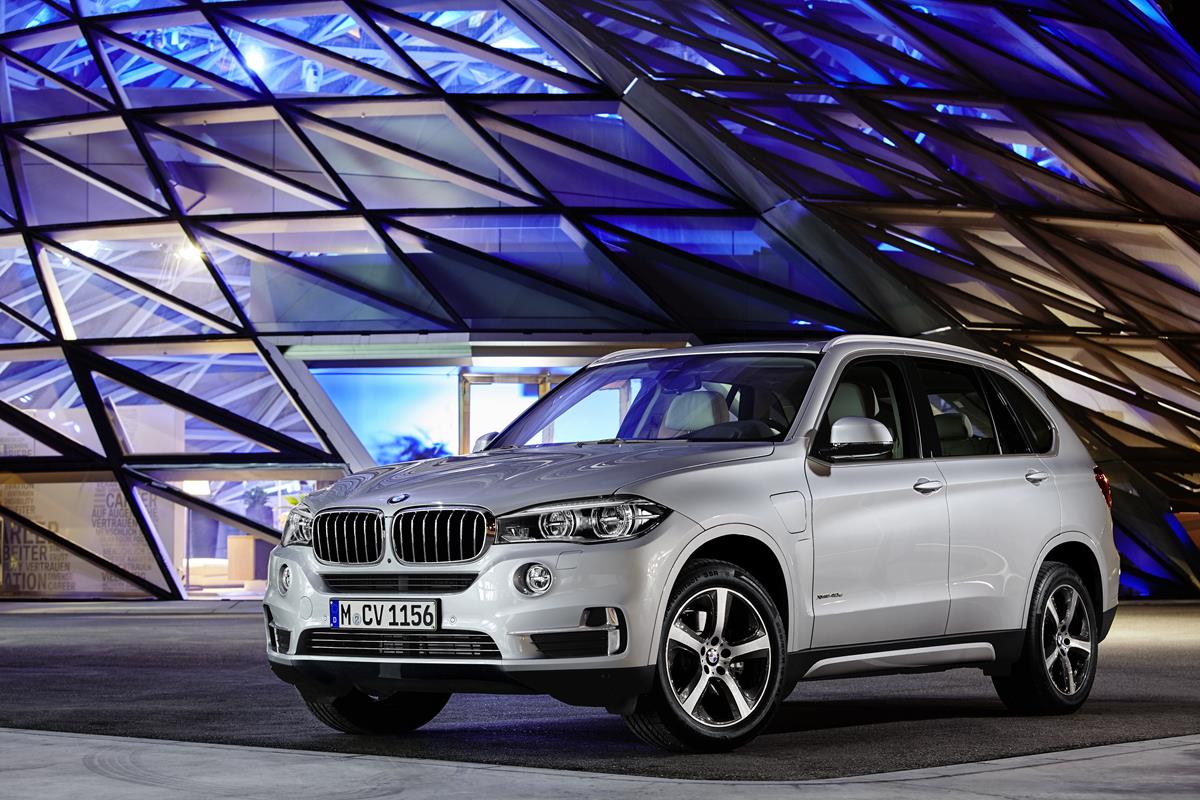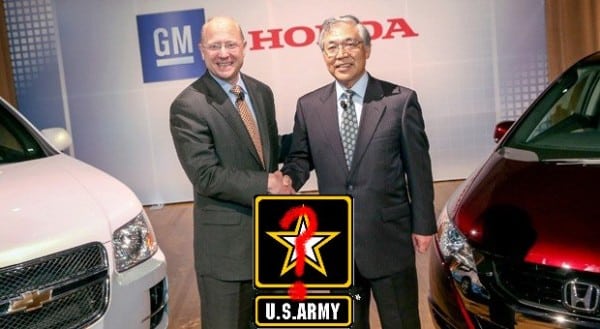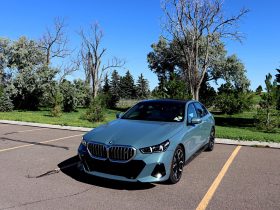General Motors and Honda announced a week or so ago that they would be collaborating on next-generation hydrogen fuel cell and storage development. This effectively makes the two most knowledgeable automakers in fuel cell technology a sort of H2 dream team. We talked about this in our podcast last week.
At that time, it seemed apparent that GM was getting back into the fuel cell game because of political pressure and the potential PR losses they could incur in a couple of years when they suddenly become the only major automaker without a hydrogen fuel cell vehicle (HFCV) in production. Now, rumor is that while that may be part of the reason, the U.S. Army may have more to do with it than anything else.
When the GM-Honda collaboration was announced, most of us didn’t notice one minor detail in their announcement: they said they would be working with “other stakeholders” on the deal. Most would assume that this means suppliers and technology firms in and around the H2 tech boom. Now it’s come to light that the Army may be one of those “stakeholders.”
This would make sense, since GM has worked closely with the Department of Defense on fuel cell development for military vehicles, including a fleet of HFCVs in Hawaii as an Army partnership last year. At the same time, Honda has been a leader in working with the current administration in the White House to develop a hydrogen fueling infrastructure, which includes a lot of development in storage technologies. That became the H2USA program launched in May.
Perfect match?
The U.S. military has been working with fuel cells for a long time and was, in fact, one of the original promoters of the idea to NASA when they were looking for space batteries way back when. Today, the Army has the world’s largest fleet of military fuel cell vehicles and other branches, like the Navy and Air Force, have also been doing a lot of R&D for HFCVs of various types as well.
Given the partnerships between the military (specifically the Army), General Motors, and the renewed push from the White House to get interested in hydrogen as a fuel source, it’s seems very likely that the DOD (or at least one branch of it, ala the Army) would be one of the “stakeholders” in the GM-Honda alliance. Others may include the State of Hawaii, with its Clean Energy Initiative, and the State of California, which also benefits from H2 transportation initiatives as the nation’s top test bed for alternative fuels.
For now, of course, the Army’s involvement is just a theory, but it seems pretty sound given the evidence at hand. It also throws a new cog onto the guessing wheel regarding why GM and Honda would suddenly decide to work together when neither company has had much of a “plays well with others” attitude in the past.








